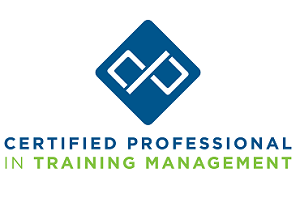One of the great things about the training industry is the varied opportunities it presents. Each business and industry will have nuanced educational needs and methods. As a result, whether you’re a new graduate or a seasoned learning leader, there are likely to be times when you’ll be looking for new and enriching challenges.
The first step to landing a new role in learning and development (L&D) is a solid job application. There’s no shortage of skilled trainers in the job market, and your success will depend on how positive your first impression is. So, it’s worth exploring a few key areas you’ll need to focus on:
1. Align Your Resume
As a training professional, even at the start of your career, you may well have a standard resume. This could include your biggest milestones, such as impressive internships or high-profile employers. However, sending out the same standard resume to every possible employer is unlikely to have the most impact.
This is because the training industry is highly competitive and standardized documents don’t tend to stand out from the crowd. A better approach is to align your resume to the specific needs and interests of the companies you want to work with. This involves a little bit of research.
Go through individual job postings and identify the skills that each employer highlights for the given job role. Look into the types of learning programs each is particularly interested in. Even reviewing the companies’ websites to better understand their values is useful. After all, trainers have a direct influence on the attitude and ethics employees apply when working at the company.
From here you can adapt your resume to lean into these aspects. Seriously consider which of your experiences and skills genuinely align with the specifics of the role and represent these. For instance, if the company prioritizes cutting-edge processes, perhaps highlight the programs you’ve designed that use extended reality (XR) tools or other innovative learning technologies. Not only can this prove your value to the business but also it may help your resume to be picked up by applicant management systems (AMSs) that use highly specified keywords related to the company’s needs.
2. Create a Portfolio
At its core, training is a highly creative field. You’ll develop curricula, identify tools and activities for different learning approaches and help solve problems related to skills development needs. Therefore, job applications in the training industry can benefit from building a portfolio to demonstrate your creative processes. Be sure to include:
- Examples of curriculum planning for different types of skills.
- Examples of some of your training materials, ranging from physical handouts to role-playing scenarios.
- Examples of alternative trailing modules for people of different learning needs and how your approach supports diversity, equity and inclusion (DEI).
Remember, though, that your portfolio doesn’t have to only include examples of professional work. Particularly at the beginning of your career, you’re unlikely to have a lot of used materials to provide. In lieu of these, personal projects can still hold a lot of value. Feel free to populate your portfolio with examples created during your education or you can even devise curriculums or materials for hypothetical clients. The aim is to demonstrate how you approach training and curriculum design.
3. Write an Enticing Cover Letter
Having a great resume and portfolio is essential to highlight that you’re a skilled trainer. That said, you need to convince those hiring for positions to actually view these materials. Getting past that first hurdle requires a solid cover letter.
This is an important document, whether you’re applying for a first job or internship or are an experienced pro. When you’re creating a great cover letter, your opening paragraph should provide a brief introduction while asserting why you’d be a great fit for the business to which you’re applying. The middle paragraphs should provide more context on why you want to work for the company and what you have to offer. Keep it brief, though, while also making it highly specific to the company and role you’re applying for.
Making your cover letter visually stimulating can be a good way to make it stand out, too. Many graphic design software platforms have templates for cover letters you can use. Remember, though, to make choices that are both accurate reflections of your professional identity and in keeping with the values of the company you’re applying for.
Conclusion
A strong job application (and cover letter) can help land you an interview for an exciting training role. Your approach should include adapting your resume to align with employers’ needs alongside crafting portfolios and cover letters that communicate your value. This more tailored methodology can also help you as you begin the interview process. Your research and resume alignment efforts will give you a better knowledge of the companies you apply to, which can give you more informed talking points that help highlight you as a great candidate.




